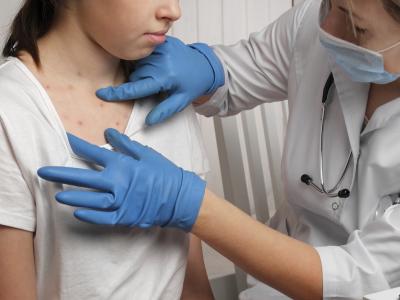US flu level's upward inch up, led by 2009 H1N1
In the week that closed out January, flu activity continued its slow rise, with one key marker—the percentage of respiratory specimens testing positive for flu—rising from 5% to 6.8% compared with the previous week, the US Centers for Disease Control and Prevention (CDC) said today in its weekly update.
Overall, the percentage of clinic visits for flulike illness remained a bit above the national baseline, but 6 of the CDC's 10 regions are above their region-specific baselines for that indicator.
The 2009 H1N1 virus is predominating, and antiviral-resistance testing since Oct 1 on a small number of isolates has shown that two samples were resistant to oseltamivir (Tamiflu).
Cumulative hospitalization levels for flu rose from 2.1 to 2.6 per 100,000 population last week, with the highest levels seen in seniors and children younger than 4 years old.
Two more pediatric flu deaths were reported, lifting the season's total so far to nine. Overall deaths from pneumonia and flu were below seasonal baselines in two systems the CDC uses to track those trends.
Puerto Rico was the only location that reported high flulike illness activity, another indicator that reflects clinic visits for flu. Arkansas and Connecticut reported moderate activity.
Widespread geographic spread of flu was reported in Puerto Rico and three states: California, Iowa, and Massachusetts.
Feb 5 CDC FluView report
Study: Early antivirals cut flu hospitalization for pregnant women
Antiviral drugs decrease the amount of time pregnant women with the flu have to stay in hospitals, especially in severe cases, according to a study yesterday that looked at data from 14 states and across four flu seasons.
The Journal of Infectious Diseases study, whose data began in the 2010-11 flu season, showed that pregnant women who took oseltamivir early in their disease course and whose infection ended up severe had a 5-day shorter length of stay (LOS). Women who were given antiviral drugs within the first 2 days of symptom onset had a median LOS median of 2.2 days; later, compared with 7.8 days for those treated later.
A severe case was defined as involving intensive care unit admission, mechanical ventilation, respiratory failure, or worse. For non-severe cases, the LOS was still lower if antiviral drugs were administered within 2 days, but the difference was smaller: 2.4 days versus 3.1.
All cases were lab-confirmed influenza. Because the affect on LOS already diminishes after the second day of symptom appearance, however, the study recommends that healthcare professionals do not wait for positive tests before administering antivirals to pregnant patients.
Only 26% of the hospitalized pregnant women had received their seasonal flu vaccine, and the study’s authors reminded people that anyone 6 months old or older is recommended to get a flu vaccine, including pregnant women.
Feb 4 J Infect Dis study
Feb 4 Infectious Diseases Society of America press release on the study










